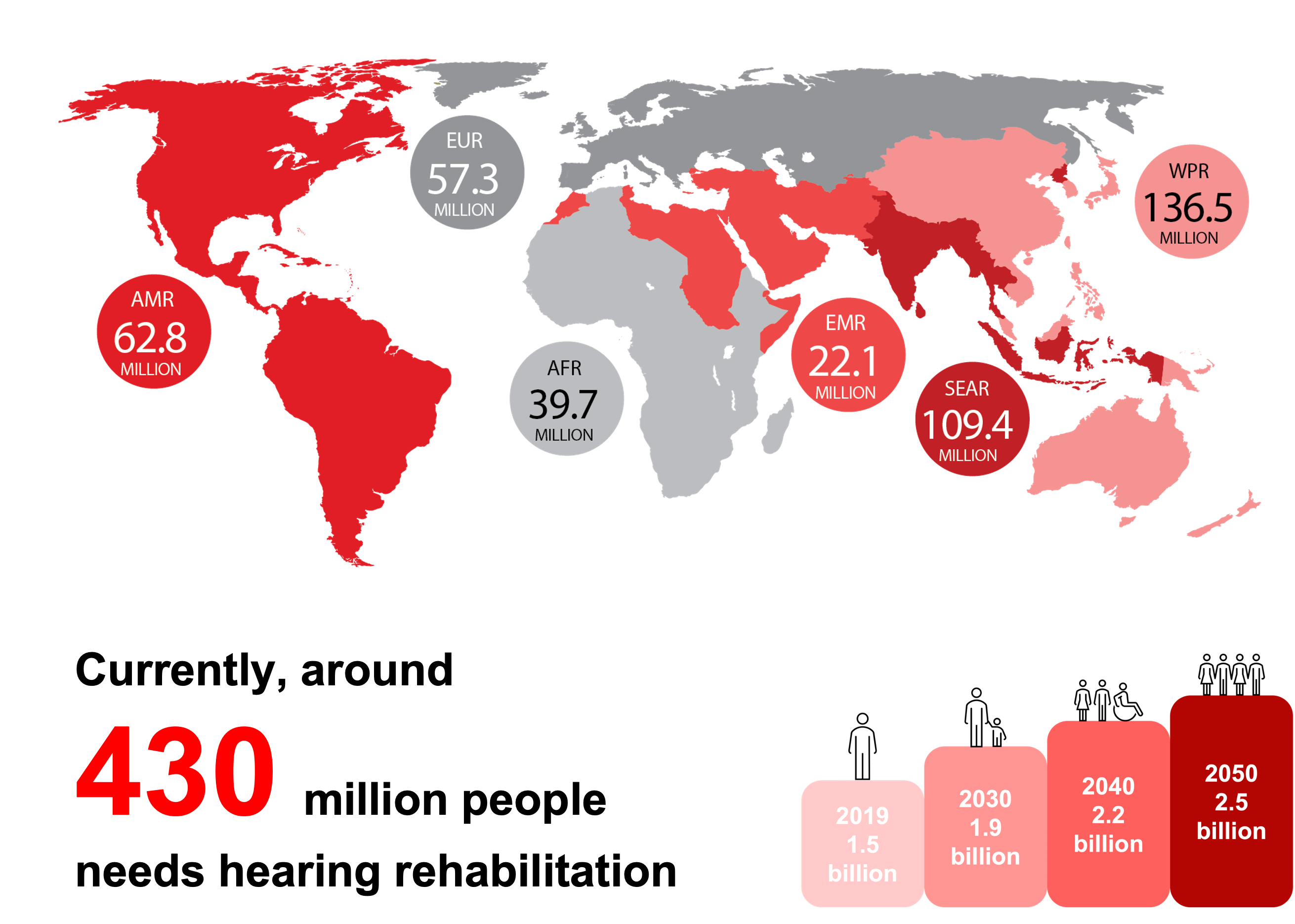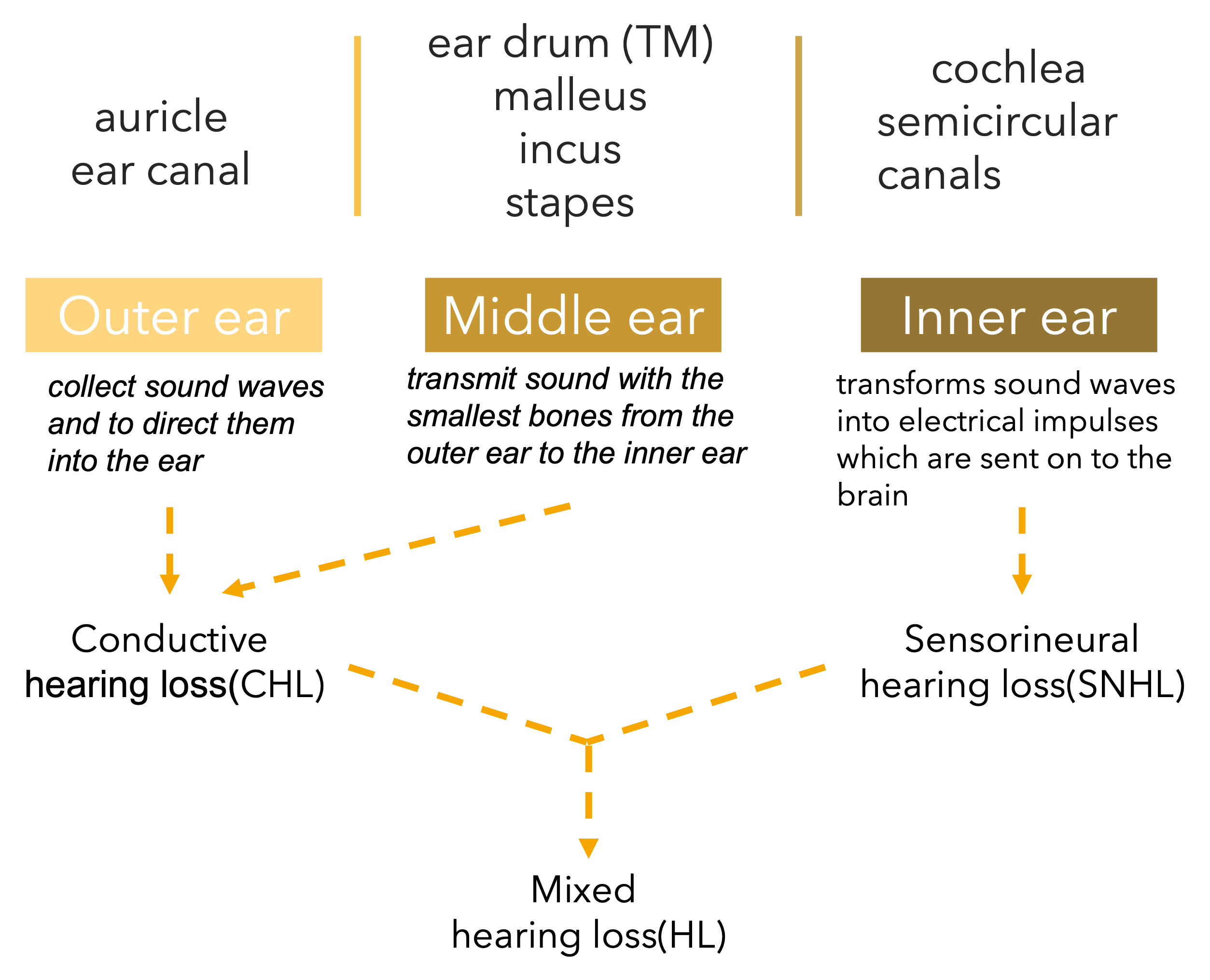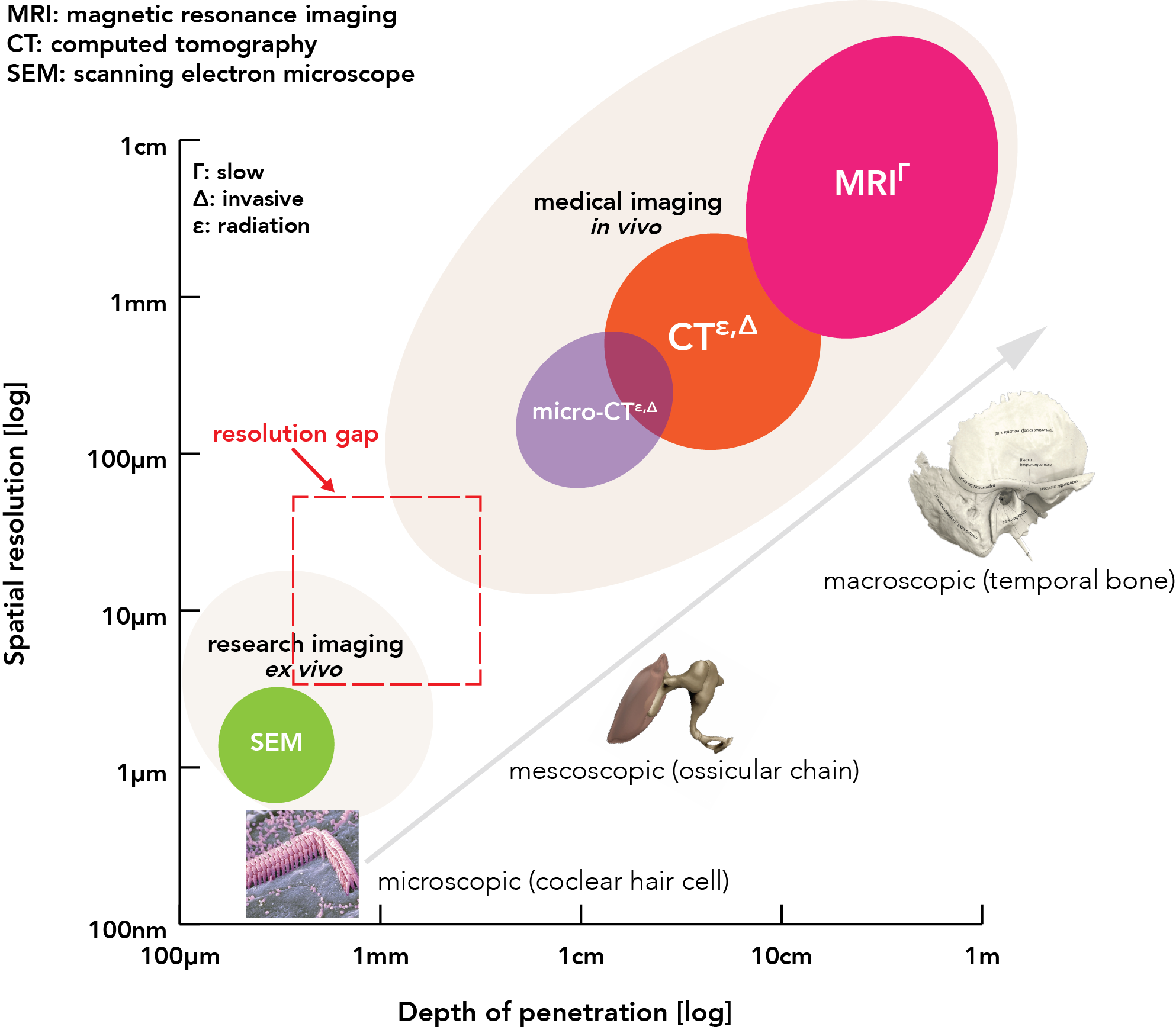Hearing and hearing loss
Epidemiology of hearing loss
The sense of hearing is one of the most critical senses humans possess, as it plays a crucial role in our daily communication and emotional connection with others. Our sense of hearing allows us to enjoy music, appreciate the sounds of our environment, and communicate with those around us, which significantly improves to our quality of life by adding richness and depth to our sensory experiences. Without the ability to hear, we would miss out on the sound of a loved one's voice, the laughter of a child, or the soothing sounds of nature.
Hearing loss (HL) is a prevalent chronic condition among older Americans. In the U.S., about 5.2 million children and 26 million adults suffer from significant noise-induced HL. Detectable hearing loss affects 2 to 3 per 1,000 children at birth, and around 15% of adults over 18 report hearing difficulties. Age is a primary factor, with the highest incidence in those 60 to 69 years old. Men aged 20 to 69 are nearly twice as likely as women to experience hearing loss. Furthermore, standard tests reveal that one in eight Americans aged 12 and older has HL in both ears.


Physiology and anatomy of hearing
Forms of hearing loss
The physiology of hearing involves a complex interplay between the anatomical structures of the ear and neural pathways, leading to the sensation of sound. The human ear, capable of processing sound frequencies ranging from 20 Hz to 20 kHz, is divided into three main regions: the external ear, the middle ear (ME), and the inner ear. The external ear comprises the auricle (or pinna) and the external auditory canal (EAC), a narrow, curved cartilaginous structure about 2.5 cm long with an opening of 0.6 cm in diameter. Sound-induced air pressure changes are collected in the external ear and travel down the EAC to the tympanic membrane (TM), a thin membrane that separates the external canal from the middle ear space. The middle ear, located within the temporal bone, contains three bony structures known as the ossicles (malleus, incus, and stapes) and supporting ligaments. These structures amplify and transmit sound vibrations to the inner ear through the stapes footplate. The inner ear houses the cochlea, a spiral-shaped structure that converts mechanical motions from the ossicular chain into neural signals. Inside the cochlea, sound waves cause hair cells, specialized sensory cells responsive to specific sound frequencies, to vibrate. This vibration leads to the release of neurotransmitters, stimulating adjacent neurons. The neural signals from these hair cells are transmitted to the brain's auditory cortex via the auditory nerve.


Hearing loss, which can occur at any age and for various reasons, is categorized into three main types: sensorineural, conductive, and mixed. Sensorineural hearing loss (SNHL), the most common type, involves disorders that affect the inner ear (e.g., damaged hair cells) or the neural pathway to the auditory cortex that impedes the conversion of mechanical vibration to neuroelectric signals. Overall, the physiology of hearing involves a complex interplay between the anatomical structures of the ear and neural pathways which lead to the sensation of sound. Unfortunately, any disruption which can occur at any age and for a variety of reasons can result in hearing loss. There are three main categories of hearing loss (HL), each with its own unique causes and characteristics. The first type is sensorineural hearing loss (SNHL) and it encompasses disorders that affect the inner ear (e.g., damaged hair cells) or the neural pathway to the auditory cortex that impedes the conversion of mechanical vibration to neuroelectric signals. SNHL is the most common type of hearing loss and can be caused by a wide range of factors, including aging, exposure to loud noises, certain medications, genetic factors, and trauma.
On the other hand, conductive hearing loss (CHL) typically involves abnormalities of the TM and middle ear, which interferes with the normal transmission and/or the amplification of sound and conversion of sound to mechanical vibration. This type of hearing loss can be temporary due to cerumen impaction of the EAC, and also be caused by conditions such as ear infections, fluid accumulation in the middle ear or damage to the TM or ossicles. Finally, mixed hearing loss occurs when both conductive and sensorineural hearing loss are present, which indicates that there may be damage to both the outer or middle ear and the inner ear or auditory nerve. Regardless of its type, hearing loss (HL) can lead to substantial health and quality of life burdens – communication difficulties, cognitive decline, and mental health issues, if hearing loss is not managed properly and in a timely manner.
Existing Hearing diagnostics
Clinical painpoint
In this discussion, our focus will be on conductive hearing loss (CHL) resulting from middle ear disorders, a condition affecting roughly 4% of the global population. In clinical practice, Conductive Hearing Loss (CHL) is suspected when an air-bone gap (ABG) of 15 decibels (dB) or more is observed. The diagnosis of conductive hearing loss can be challenging due to the complexity of ear anatomy and pathology.


Traditionally, otology relies on three diagnostic pillars: clinical examination including otoscopic imaging, audiometry, and tympanometry. However, these methods often lack the precision required for confident diagnosis, leading to the supplementary and selective use of CT scans, MRI, and exploratory surgery. While these additional methods can be effective, they are not first-line approaches due to their costs, the desire to avoid radiation exposure, and the risks associated with invasive procedures. Therefore, there is a significant clinical need for diagnostic tools that can provide a non-invasive visualisation of the structural and functional state of the middle ear.
.png)